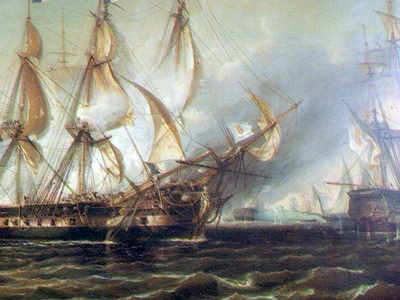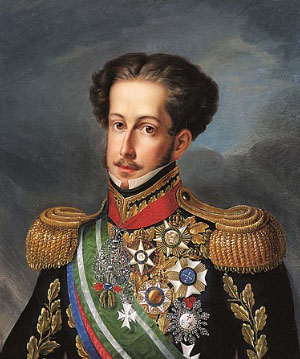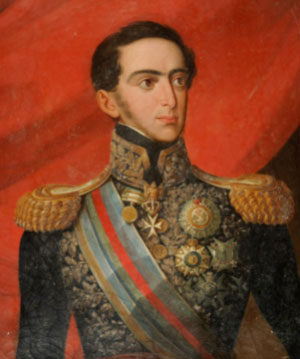Portuguese Civil War (1828-1834)
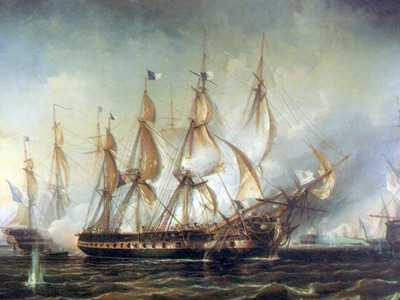
Battle of Cape St. Vincent (1833)
The fourth Battle of Cape St Vincent was fought on 5 July 1833 and was a decisive encounter in Portugal's Liberal Wars. A naval squadron commanded by the British officer Charles Napier, on behalf of Dom Pedro IV, regent for the rightful Queen Maria II, defeated the navy of the usurper Dom Miguel.
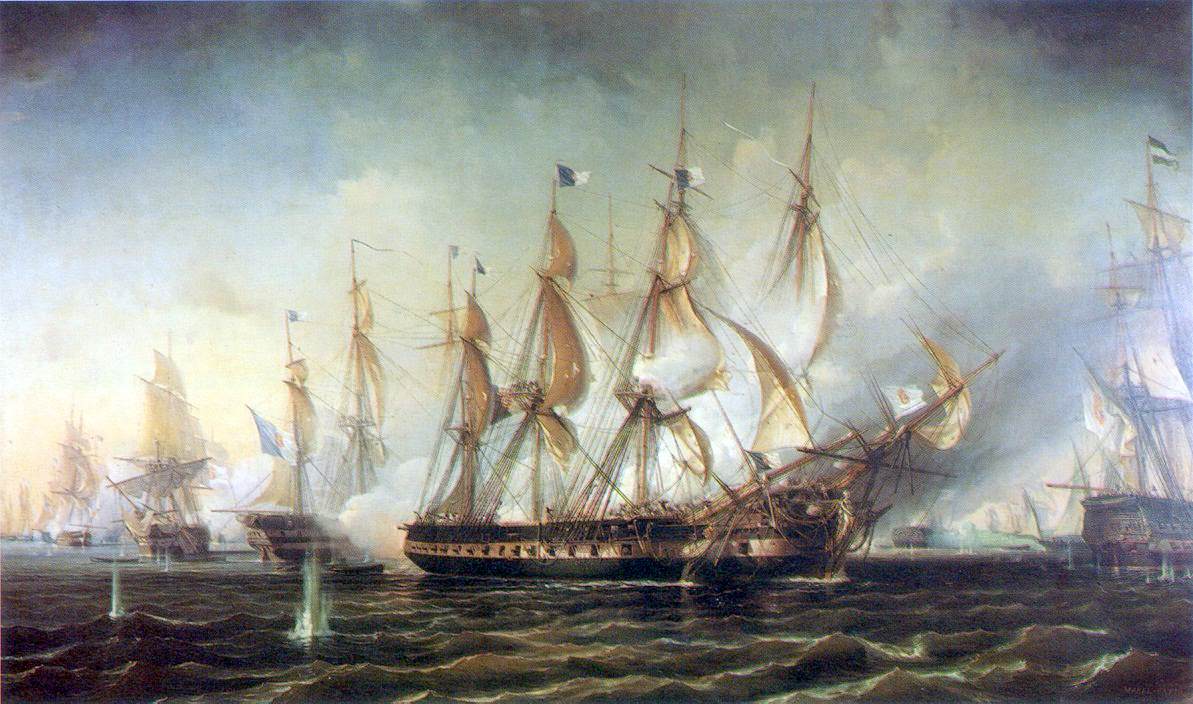
Battle of Cape St. Vincent, 5 July 1833

Battle of Cape St. Vincent, 5 July 1833
( Click image to enlarge)
Background
While serving in the Azores, Napier had come to know members of the exiled Portuguese liberals, who had offered him command of the small fleet serving Dom Pedro, which largely consisted of a few old men-o'-war and some East Indiamen purchased from the British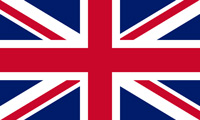 The United Kingdom of Great Britain and Ireland was a sovereign state in Northwestern Europe that comprised the entirety of the British Isles between 1801 and 1922. The United Kingdom, having financed the European coalition that defeated France during the Napoleonic Wars, developed a large Royal Navy that enabled the British Empire to become the foremost world power for the next century.. In February 1833 Napier accepted their proposals, in succession to another British officer, Captain George Rose Sartorius, who was already serving as Admiral of Pedro's navy. Using the name 'Carlos de Ponza' in a transparent attempt to disguise his identity as a British officer to escape penalties under the Foreign Enlistment Act, in June 1833 Napier joined his new command in the Douro River off Oporto. ('Carlos de Ponza' = Charles of Ponza; one of Napier's most daring feats in the Napoleonic War had been the capture of the island of Ponza in the Mediterranean in 1813). Dom Pedro, currently being besieged in Oporto by the forces of Dom Miguel, bestowed on Napier his commission as Vice Admiral, Major General of the Portuguese Navy and Commander in Chief of the fleet. An eccentric but indomitable character, Napier restored the situation in the fleet, which had been close to mutiny because of lack of pay, and proposed a new strategy to break the siege. Flying his flag in the frigate Rainha de Portugal 46, commanded by Captain F.G. MacDonough and with his stepson Charles Elers Napier as Chief of Staff, on 20 June he sailed from Oporto with his small fleet, transporting the Duke of Terceira and half the constitutional army to the Algarve so that they could open a second front in the south of the country and march on Lisbon. After successfully disembarking this force, on the return voyage he encountered the considerably superior fleet of Dom Miguel off Cape St Vincent on 3 July 1833, and after two days of maneuvering in calm and very light winds he brought them to action.
The United Kingdom of Great Britain and Ireland was a sovereign state in Northwestern Europe that comprised the entirety of the British Isles between 1801 and 1922. The United Kingdom, having financed the European coalition that defeated France during the Napoleonic Wars, developed a large Royal Navy that enabled the British Empire to become the foremost world power for the next century.. In February 1833 Napier accepted their proposals, in succession to another British officer, Captain George Rose Sartorius, who was already serving as Admiral of Pedro's navy. Using the name 'Carlos de Ponza' in a transparent attempt to disguise his identity as a British officer to escape penalties under the Foreign Enlistment Act, in June 1833 Napier joined his new command in the Douro River off Oporto. ('Carlos de Ponza' = Charles of Ponza; one of Napier's most daring feats in the Napoleonic War had been the capture of the island of Ponza in the Mediterranean in 1813). Dom Pedro, currently being besieged in Oporto by the forces of Dom Miguel, bestowed on Napier his commission as Vice Admiral, Major General of the Portuguese Navy and Commander in Chief of the fleet. An eccentric but indomitable character, Napier restored the situation in the fleet, which had been close to mutiny because of lack of pay, and proposed a new strategy to break the siege. Flying his flag in the frigate Rainha de Portugal 46, commanded by Captain F.G. MacDonough and with his stepson Charles Elers Napier as Chief of Staff, on 20 June he sailed from Oporto with his small fleet, transporting the Duke of Terceira and half the constitutional army to the Algarve so that they could open a second front in the south of the country and march on Lisbon. After successfully disembarking this force, on the return voyage he encountered the considerably superior fleet of Dom Miguel off Cape St Vincent on 3 July 1833, and after two days of maneuvering in calm and very light winds he brought them to action.
The Battle
Napier’s command was essentially a mere squadron of six ships: three frigates, a corvette, a brig and a schooner, mounting a total of 176 guns. (He had some small steamers under his command which he hoped to use as tugs, but they abandoned him while the two forces were becalmed on the 4th of July: thus the subsequent battle was perhaps the last engagement of consequence between two fleets of sailing warships.) On 5 July the wind eventually got up and at 4.00 p.m. he attacked the Miguelite force of 3 ships of the line, a frigate, a xebec, 3 corvettes and 2 brigs, mounting altogether 372 guns. Knowing he could not long sustain a cannonade from such a superior opponent, Napier closed against enemy fire and boarded, so that the battle was decided in hand-to-hand fighting. In the event the Liberal forces captured all three ships of the line, a frigate and a corvette, whose crews agreed to fight from now on for Maria II; another ship came over the next day; the remnant of the Miguelite force fled to Lisbon or Madeira. Napier’s losses were about 30 killed (including the captain of Rainha de Portugal and two other captains) and about 60 wounded (including Charles Elers Napier), as against somewhere between 200 and 300 of the enemy, including the Miguelite commander, Admiral Manuel António Marreiros. On 6 July, receiving news of the victory, Dom Pedro named Napier as Viscount Cape St Vincent in the peerage of Portugal. Immediately afterwards his fleet was ravaged by cholera (which was raging on mainland Portugal), with appalling loss of life, but he was able to bring it safe into Lisbon, which the Miguelistas had precipitately abandoned after being defeated by Terceira’s army advancing from the south at the Battle of Almada. Napier visited Rear-Admiral Sir William Parker of the British navy who was in the vicinity of the Tagus, and was received according to his Portuguese rank as an Admiral. Though he was subsequently struck off the Navy List at the insistence of the French, he was restored to his rank in the Royal Navy within two years and the Battle, largely won by British officers and crews fighting for Maria II, was viewed in England as bringing honour to the British navy. The sea victory, making possible the capture of Lisbon from the Miguelites, was the single most important event contributing to Miguel's eventual defeat and overthrow in 1834.
Ships Involved
Loyalist fleet (Charles Napier)
- Rainha de Portugal 46 (flag, commodore Wilkinson, captain MacDonough)
- Dona Maria 42 (Peake)
- Dom Pedro 50 (Thomas Goble)
- Vila Flor 18 (Ruxton)
- Portuense 20 (Blackstone)
- Faro 6
- a few steam tugs and transports
Miguelite fleet (Manuel António Marreiros)
- Nau Rainha 74 (Barradas) - Captured by Rainha de Portugal
- Dom João 74 - Captured
- Martinho de Freitas 50 - Captured
- Duquesa da Bragança 56 - Captured by Dona Maria
- Isabel Maria 22 (corvette) - Captured
- Princesa Real 24 (corvette)
- Tejo 20 (corvette)
- Sybille 20 (corvette)
- Audaz 18 (brig)
- Activa (xebec)
- several other brigs
HISTORY
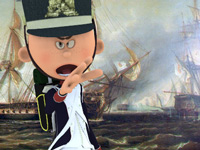
RESOURCES
This article uses material from the Wikipedia articles "Liberal Wars" and "Battle of Cape St. Vincent (1833)", which is released under the Creative Commons Attribution-Share-Alike License 3.0.
© Stories Preschool. All Rights Reserved.
